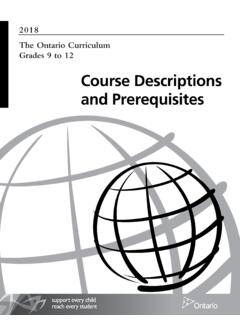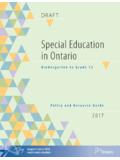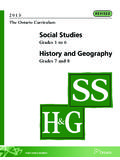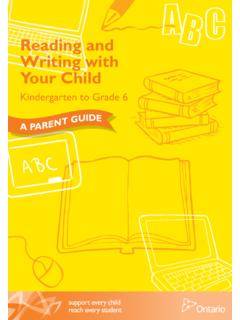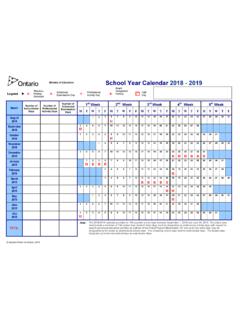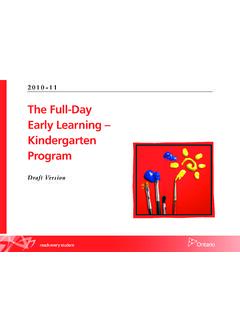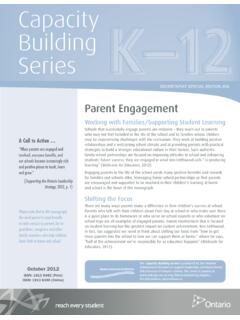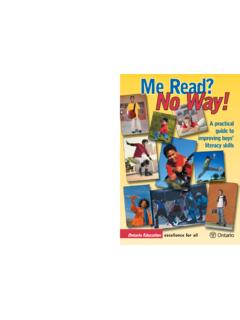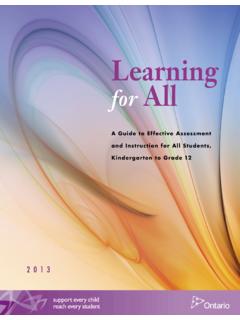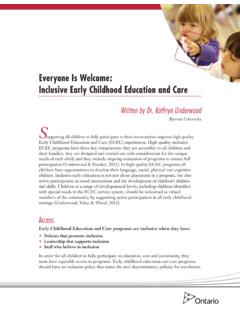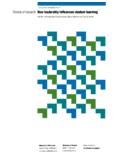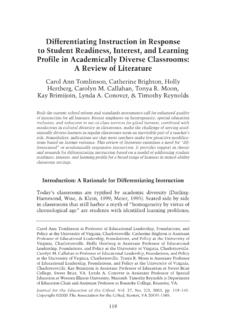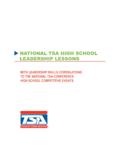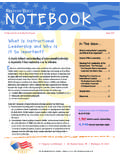Transcription of 2013 School Effectiveness Framework - edu.gov.on.ca
1 2013. School Effectiveness Framework A support for School improvement and student success K 12. The School Effectiveness Framework K 12. i Ministry of Education Minist re de l' ducation Mowat Block difice Mowat Queen's Park Queen's Park Toronto ON M7A 1L2 Toronto (Ontario) M7A 1L2. August, 2013. Dear Colleagues, At the time of the release of the K-12 School Effectiveness Framework , 2010, we promised that the resource would be reviewed and refined, following a two year implementation period and based on feedback from educators across the province. We have been listening to you. You will find that this revised version supports a clear focus on implementation in schools and boards.
2 During the updating of the resource, many voices and effective practices have been incorporated into the content. As you know, the 2010 resource was intended to identify evidence-based indicators of successful practices in effective schools. The K-12 SEF, 2013. provides opportunities for schools to continue to examine their practices, to engage in deep and purposeful conversations and to take collaborative action for the benefit of our students and educators. School self-assessments and district processes are collaborative, collegial, equitable, and inclusive interactions. Their purpose is to continue to support strategic planning, allocation of resources and board improvement planning for student achievement.
3 In response to your input, the K-12 School Effectiveness Framework (SEF), 2013 updates termi- nology and references and includes new learnings, policies and current research. It incorporates recommendations from an external review, and provides an expanded glossary. Our collective success over the past ten years has taught us that we can give our students a better future when we examine our assumptions and actions deeply, and when our work is carefully aligned with research and evidence. Thank you for your ongoing commitment to improving professional practice and student learning. We know this updated resource will support your work in schools and your board.
4 Mary Jean Gallagher Janine Griffore Chief Student Achievement Officer of Ontario Assistant Deputy Minister Assistant Deputy Minister French Language, Aboriginal Student Achievement Division Learning and Research Division Table of Contents PART 1. Context Key Purposes of the K-12 School Effectiveness Framework 3. Design of the Framework 4. Improvement Planning and School Self-Assessment 5. Connection to the Ontario Leadership Framework 2012 6. Linking School Self-Assessment and School Improvement Planning 6. Data Collection and Analysis 7. Monitoring 8. The District Process 8. PART 2. Components, Indicators, Evidence Component 1 Assessment for, as and of Learning 9.
5 Component 2 School and Classroom Leadership 16. Component 3 Student Engagement 22. Component 4 Curriculum, Teaching and Learning 26. Component 5 Pathways Planning and Programming 34. Component 6 Home, School and Community Partnerships 38. PART 3. District Process 42. PART 4. Glossary 45. PART 5. References 53. Assessment for, as and of Learning K 12 School Effectiveness Framework Curriculum, Teaching and Learning Assessment is connected to the curriculum, collaboratively developed by A culture of high expectations supports the belief that all students can educators and used to inform next steps in learning and instruction.
6 A support for School improvement learn, progress and achieve. A variety of relevant and meaningful assessment data is used by students and student success A clear emphasis on high levels of achievement in literacy and numeracy and educators to continuously monitor learning, to inform instruction and is evident throughout the School . determine next steps. Teaching and learning in the 21st Century is collaborative, innovative Students and educators build a common understanding of what students and creative within a global context. are learning by identifying, sharing, and clarifying the learning goals and Systems Thinking Learning is deepened through authentic, relevant and meaningful success criteria.
7 Student inquiry. During learning, timely, ongoing, descriptive feedback about student Instruction and assessment are differentiated in response to student progress is provided based on student actions and co-constructed strengths, needs and prior learning. success criteria. Resources for students are relevant, current, accessible, inclusive Students are explicitly taught and regularly use self-assessment and monitored for bias. nt skills to monitor, improve and communicate their learning Assessment for, Curriculum, Teaching Timely and tiered interventions, supported by a team me within the context of the Ontario curriculum and/or as and of Learning and Learning n approach, respond to individual student learning needs, Ac ro Individual Education Plan (IEP).
8 I and well-being. Assessment of learning provides relevant and cou Personalization E nv n meaningful evidence to evaluate the quality of student Pathways Planning and Programming achievement at or near the end of a cycle of learning tabilit Comprehensive education and career/life planning and to determine next steps. programs meet the learning needs, interests and y Ongoing communication about learning is in place aspirations of all students. Learning School and REACHING Pathways to allow students, educators and parents to monitor Opportunities for authentic learning experiences and support student learning. Classroom EVERY Planning and and experiential learning exist in all classrooms, Leadership STUDENT Programming schools and community programs.
9 School and Classroom Leadership Professional Precision Students, parents, families, and educators Collaborative instructional leadership builds capacity Learning understand the full range of pathways, programs, to strengthen and enhance teaching and learning. options and supports that are available. Processes and practices are designed to deepen Students build on in- School and out-of- School understanding of the curriculum and refine instruction to experiences to further explore and reflect upon their improve student learning and achievement. interests, strengths, skills and education and career/. Student Home, School Organizational structures are coherent, flexible and respond life aspirations.
10 Ip and Community Ev to the needs of students. Engagement id rsh Partnerships e Home, School and Community Partnerships en Job-embedded and inquiry-based professional learning builds ce d capacity, informs instructional practice and contributes to a culture -B ea The School Council has a meaningful role in supporting learning, of learning. as ed a lL well-being and achievement for students. n Staff, students, parents and School community promote and sustain Dir e c ti uc tio Students, parents and community members are engaged and welcomed student well-being and positive student behaviour in a safe, accepting, on Instr as respected, valued partners in student learning.
